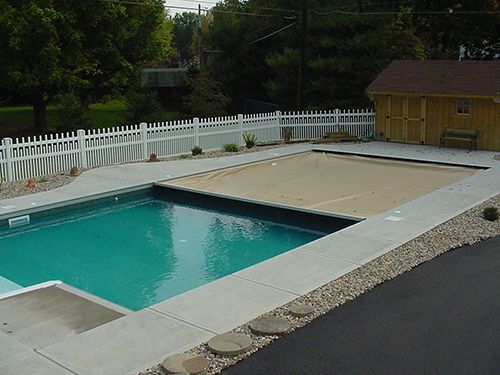
Pool Area Maintenance Tasks You Shouldn’t Skip
Even diligent pool owners miss key maintenance steps. Use this checklist to catch commonly forgotten tasks and keep your pool area safer and more efficient year-round.

As part of creating and keeping your pool area safe, you need to understand proper automatic pool cover maintenance. A swimming pool safety cover helps you prevent unsupervised access to your pool, keep it cleaner, and may be required under law, for coverage by your insurance carrier, or under your homeowner’s association guidelines. Your cover can only do its job, however, if it is in good condition and functioning properly. While pool covers are easy to care for and offer you a long service life, periodic automatic pool cover cleaning and care will help both maximize your pool’s safety and protect your investment.

Part of effective automatic pool cover maintenance comes from understanding how your cover protects your swimming pool. Thousands of lives are lost to accidental drownings every year, and even more victims are treated for injuries related to drowning incidents. Installed both as standalone pool safety devices and as a second layer of protection behind removable mesh pool fencing, an automatic pool cover is one of the easiest ways to close your pool and keep it closed when you aren’t around to supervise the action. Able to hold the weight of a full-grown adult, swimming safety pool covers can help ensure your pool isn’t the site of a tragedy.
Automatic pool cover maintenance doesn’t have to be complicated. Some of the most important steps you can take to keep your cover in good repair take mere minutes every few days.
Just as with your general pool maintenance, periodic attention is also needed to keep your pool cover working perfectly. These tasks aren’t done as often as your regular automatic pool cover cleaning and opening, but they’re just as important to the health of your pool cover and the safety of your friends, family, and pets. That doesn’t mean you have to schedule a three-day weekend. A few hours when you open your pool for the year, before you close it over the winter months, and at least once a month in between is more than enough for regular automatic pool cover maintenance as long as no larger issues are found.

When it comes to pool safety, your local All-Safe installer is the neighborhood expert. Whether you need help with your automatic pool cover maintenance or need a free estimate on pool cover installation for your swimming area, they’re there to help. When you schedule a quote, they’ll take measurements, talk to you about your pool protection needs, and give you a written estimate that lays out your pool safety options with the information that helps you make the best decision for your loved ones’ safety. Protect your pool with an All-Safe automatic pool cover today.

Even diligent pool owners miss key maintenance steps. Use this checklist to catch commonly forgotten tasks and keep your pool area safer and more efficient year-round.

Learn the most common pool winterizing mistakes and how to avoid them for a safer, cleaner backyard during the off-season.

Mesh pool covers offer reliable winter protection by keeping out debris and preventing accidents. Learn why they’re a smart choice for safety and peace of mind.
Enter your zip code to locate an independent installer in your area
Enter your zip code to locate an independent installer in your area

Due to the many variations in monitors, phones, and browsers, color samples and product examples may appear different on different screens. Computers and mobile devices are not all calibrated equally and color reproduction on the Internet is not precise. The same is true for printed items such as brochures and other sales literature.
In addition, the colors of our products photograph differently under different lighting conditions. For example, photos taken in full sunlight will vary from photos taken on a cloudy or overcast day. Similarly, shadows from nearby objects can affect the color and transparency of our products. If a precise color or specific shade is important, please inspect the actual color of your product prior to installation.
Many of our products’ materials are not available through typical stores and vendors and therefore must be custom manufactured specifically for our use. In order to control costs and provide you with the best value possible, our raw materials are produced in large batches and can often take several months to receive. The colors of our materials can, and often do, vary slightly from batch to batch. Although we make every effort to minimize color variations, we cannot be responsible for these differences when they occur. If a precise color or specific shade is important, please inspect the actual color of your product prior to installation.
For example, we use the name “putty” to describe some of our products. Your idea of the color “putty” may be different than someone else’s idea of “putty”. In addition, products may have the same color name but may not be the exact same color. For example, we have different shades of “black”. Please do not order using color names as your only guide. If a precise color or specific shade is important, please inspect the actual color of your product prior to installation.
If it is important that your product be an exact color or shade, it is highly recommended that you inspect the actual product prior to its installation and address any concerns with your local independent installer. Most independent installers do not offer refunds or accept returns due to color variations.